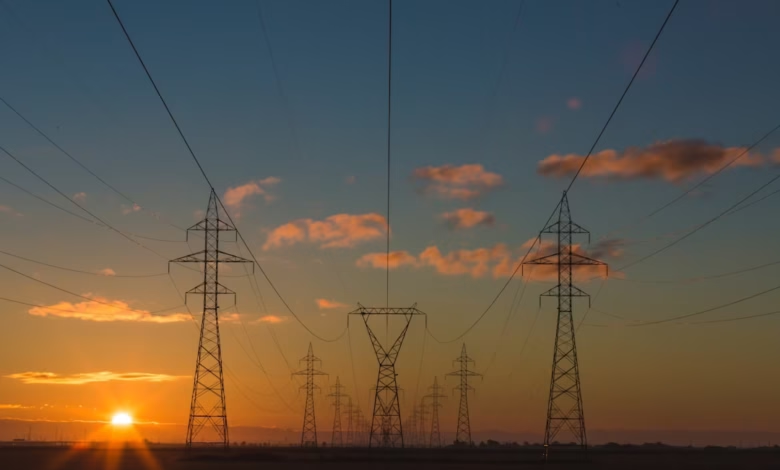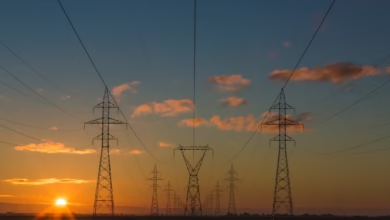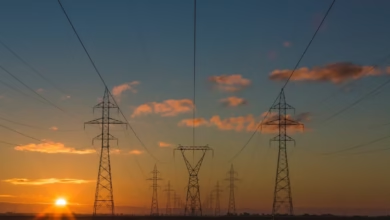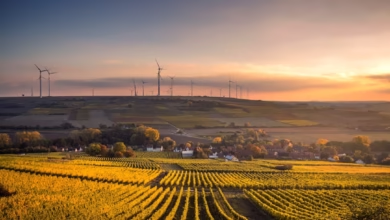Ensuring Energy Security: Navigating Renewable and Fossil Fuels for a Sustainable Future

In an era characterized by rapid technological advancements and heightened environmental concerns, energy security has emerged as a pivotal issue for nations worldwide. Ensuring a stable and reliable energy supply is crucial not only for economic stability but also for social well-being and environmental sustainability. As the world transitions from traditional fossil fuels to diverse renewable energy sources, understanding the interplay between these energy types becomes vital. This article delves into the complexities of energy security, exploring how renewable energy, nuclear energy, and fossil fuels contribute to a consistent energy supply. We will examine significant innovations in energy storage and efficiency, which are essential components in fostering a resilient energy transition amidst climate change challenges. Additionally, we will navigate the landscape of global energy trends, highlighting the importance of energy markets, policies, and investments in shaping a secure energy future. By addressing these key areas, we aim to provide a comprehensive overview of the strategies and innovations necessary for achieving energy security in the 21st century.
- 1. Understanding Energy Security: The Role of Renewable and Fossil Fuels in a Stable Supply
- 2. Innovations in Energy Storage and Efficiency: Key Strategies for a Resilient Energy Transition
- 3. Global Energy Trends: Navigating Energy Markets and Policies for Future Energy Security
1. Understanding Energy Security: The Role of Renewable and Fossil Fuels in a Stable Supply
Energy security is a critical aspect of modern society, ensuring that nations have a stable and reliable energy supply to support economic growth and social well-being. In this context, understanding the roles of both renewable and fossil fuels is essential. Renewable energy sources such as solar power, wind energy, hydropower, and bioenergy are becoming increasingly vital as countries strive to transition to greener energy systems. These sources not only contribute to energy security by diversifying supply but also help mitigate the impacts of climate change through reduced greenhouse gas emissions.
Fossil fuels, while historically dominant in energy markets, still play a significant role in the current energy landscape. The transition to renewable energy does not eliminate the need for fossil fuels immediately; rather, a balanced approach is necessary. Fossil fuels can provide a reliable baseline supply while renewable energy technologies continue to develop and expand. This synergy can enhance energy security by ensuring a stable energy supply during periods of low renewable generation, particularly in regions where energy storage solutions are still being implemented.
Nuclear energy also contributes to energy security by providing a consistent and low-carbon source of thermal energy. As countries invest in energy innovations, the integration of nuclear power with renewable sources can create a robust energy mix. Furthermore, energy storage technologies are crucial for managing the intermittent nature of renewable energy. By investing in energy storage solutions, nations can store excess energy generated during peak production hours for use during times of high demand.
Smart grids and energy efficiency measures are also essential components of a secure energy framework. These technologies enable better management of energy distribution, reduce waste, and enhance the overall reliability of energy supply. Additionally, energy policy should promote investments in distributed energy resources and energy R&D to foster innovation in both renewable and conventional energy sectors.
As global energy trends evolve, the emphasis on energy transition becomes increasingly significant. Countries must strategically navigate energy imports and exports to ensure energy security while considering the economic impacts of energy markets. The adoption of advanced technologies such as carbon capture and hydrogen energy can further bolster energy security, creating pathways for sustainable energy use while addressing environmental concerns.
In summary, achieving energy security requires a comprehensive understanding of the interplay between renewable and fossil fuels, along with the integration of innovative technologies and effective energy policies. By prioritizing energy efficiency, investing in energy innovations, and embracing a mixed-energy approach, nations can secure a stable and reliable energy future.
2. Innovations in Energy Storage and Efficiency: Key Strategies for a Resilient Energy Transition
As the world pivots towards a more sustainable future, innovations in energy storage and efficiency are pivotal in ensuring energy security during the energy transition. The increasing reliance on renewable energy sources, such as solar power and wind energy, necessitates advancements in how we store and utilize this energy effectively. One of the key strategies for achieving a resilient energy transition lies in enhancing energy storage technologies.
Energy storage systems, including batteries and thermal energy storage, play a crucial role in balancing supply and demand, particularly when integrating intermittent renewable energy into the grid. For instance, advancements in hydrogen energy and battery technologies are enabling the storage of excess energy generated during peak production times, which can be deployed during periods of high demand. Furthermore, the development of smart grids allows for more efficient energy transportation and distribution, optimizing energy flow and reducing losses associated with energy markets.
Energy efficiency is another cornerstone of a stable energy supply. Implementing energy-efficient practices across various sectors—such as industrial processes, buildings, and transportation—can significantly reduce reliance on fossil fuels and lower overall energy consumption. The rise of electric vehicles (EVs) embodies this trend, as they not only reduce greenhouse gas emissions but also offer opportunities for energy storage by acting as distributed energy resources. This dual functionality can contribute to enhanced energy security by providing backup power during outages or peak demand periods.
In addition to storage and efficiency improvements, energy policy plays a vital role in shaping the landscape of energy innovations. Governments and stakeholders must invest in energy R&D to promote technologies like carbon capture and bioenergy, which can further mitigate climate change impacts while bolstering energy security. Additionally, diversifying energy imports and exports through offshore energy initiatives and hydropower can enhance a country's energy independence, making it less vulnerable to fluctuations in global energy trends.
As we navigate the complexities of the energy transition, the integration of these innovations will be essential for creating a resilient energy system capable of supporting a sustainable future. By focusing on energy storage, efficiency, and supportive energy policies, we can ensure a reliable energy supply that meets the demands of a changing world.
3. Global Energy Trends: Navigating Energy Markets and Policies for Future Energy Security
In the quest for energy security, understanding global energy trends is essential for navigating the complex landscape of energy markets and policies. As countries strive to balance their energy needs with environmental concerns, the shift toward renewable energy sources is becoming increasingly prominent. Renewable energy, such as solar power, wind energy, and hydropower, is leading the energy transition, helping to reduce reliance on fossil fuels while promoting energy efficiency and sustainability.
The growing demand for energy coupled with climate change challenges has prompted significant investments in energy innovations, from carbon capture technologies to smart grids that optimize energy distribution. Energy storage solutions are vital in this context, enabling the integration of intermittent renewable sources like solar and wind energy into the grid. These technologies not only stabilize energy supply but also enhance energy security by reducing vulnerabilities associated with fossil fuel dependency.
Policies surrounding energy markets are evolving, with many governments implementing frameworks that encourage energy exports and imports in a way that reinforces national security. By diversifying energy imports, nations can mitigate risks associated with geopolitical tensions and fluctuating fossil fuel prices. Additionally, investments in distributed energy systems and offshore energy projects are gaining traction, as they provide localized energy solutions and enhance resilience against disruptions.
Nuclear energy remains a critical component of the global energy mix, providing a stable and reliable source of thermal energy that can support energy security goals. Meanwhile, hydrogen energy is emerging as a promising solution for decarbonizing sectors that are challenging to electrify, such as heavy industry and transportation, including electric vehicles.
As energy economics continues to evolve, stakeholders must stay informed about global energy trends and adapt their strategies accordingly. The integration of energy R&D into national policies is crucial for fostering innovations that will secure a sustainable energy future. By proactively addressing the challenges and opportunities presented by these trends, countries can ensure a stable and reliable energy supply that meets the demands of the present while safeguarding the environment for future generations.
In conclusion, energy security remains a critical component of our modern world, underpinning economic stability and national security. As we navigate the complexities of global energy trends, it is essential to understand the balance between renewable energy sources and fossil fuels in ensuring a reliable energy supply. Innovations in energy storage and efficiency, such as smart grids and carbon capture technologies, play a pivotal role in advancing the energy transition towards a more sustainable future.
Moreover, energy policy must adapt to the rapidly changing landscape of energy markets, taking into account the importance of distributed energy solutions and investments in green energy initiatives like solar power, wind energy, and hydropower. As we strive to combat climate change, the development of nuclear energy, hydrogen energy, and electric vehicles will be crucial in reducing carbon emissions while enhancing our energy security.
By embracing these energy innovations and prioritizing investments in energy R&D, we can fortify our energy infrastructure against potential disruptions from energy imports and exports. Ultimately, achieving energy security requires a collaborative approach among governments, industries, and communities to foster a resilient energy system that meets the demands of the present while preparing for the challenges of the future.





